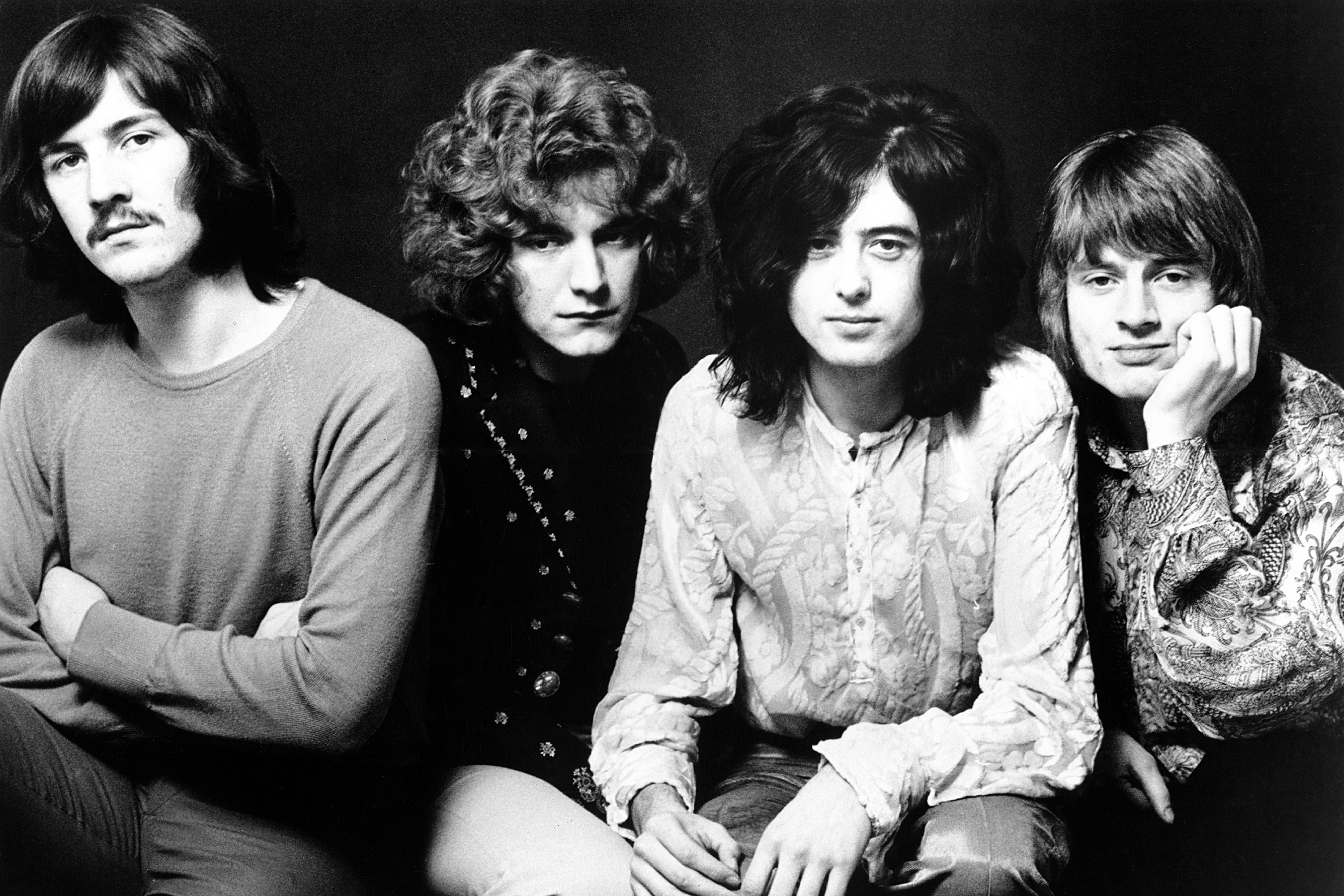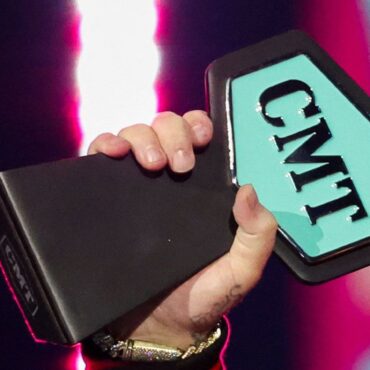chevron_left
-
play_arrow
NGradio So good... like you
The members barely knew each other when they began recording their first LP, but all the pieces were in place: blues, power and incredible musicianship
It only takes the first two seconds of the first song on their first record for Led Zeppelin to make crystal clear exactly what they intend to do — and exactly what they intend to do to you. In the opening to “Good Times Bad Times,” the band drops a two-note attack that falls like a cartoon safe, clearing the air for John Bonham’s syncopated groove, Jimmy Page’s swift-sword guitar and Robert Plant’s high-end howling about sex so loud it gets the neighbors talking. “It really wasn’t a pretty thing,” Plant later said. “It wasn’t supposed to be a pretty thing. It was just an unleashing of energy.”
He could’ve been talking about the entire album. Recorded in 30 hours of studio time stretched over a three-week period (“I know because I paid the bill,” Page said), Zeppelin’s debut was hardly a high-concept affair; its making has been compared to the breakneck daylong session the Beatles pulled to cut Please Please Me in 1963. Yet the essential elements the band would expand on over the next decade are all in place: There’s a miasmic psychedelic blues trip (“Dazed and Confused”), high-def Fifties revisionism (“Communication Breakdown”), shifts from tender ballad to metal body slam (“Babe I’m Gonna Leave You”), and rips-cum-retooling of folk, blues and even classical on John Paul Jones’ Bach-bitten organ intro to “Your Time Is Gonna Come” — all unified by the band’s undeniable brute force.
Zeppelin had rehearsed the material (all selected by Page) on a brief tour of Scandinavia in the summer of 1968, shortly after Page had left the Yardbirds. In many ways, they were a collection of opposites: Page was the London-scene superstar on par with Jeff Beck and Eric Clapton; Jones was also an established studio pro; folkie Plant and wild-man wild card Bonham were unknown outlanders who’d previously played together in a group called Band of Joy. “I knew exactly what I wanted to do with these fellows,” said Page, who might have had his pick of post-Yardbirds supergroups (one possibility included Keith Moon and Beck) but wanted a band where he could enjoy “artistic control in a vise grip.”
One of the first songs Page suggested to Plant was “Babe I’m Gonna Leave You,” a tumultuous reimagining of an American folk standard Page learned from a Joan Baez live record — a unique choice for four British blues studs. On “Black Mountain Side,” Page turned to English folk for inspiration, modeling the song on guitarist Bert Jansch’s recording of a Gaelic traditional song called “Black Water Side.” Led Zeppelin is rife with these kinds of nicks and allusions, and it’s where the notion of Zeppelin as unapologetic kleptos was born — from the Howlin’ Wolf–inscribed wrecking ball “How Many More Times” to the Eddie Cochran–biting rocker “Communication Breakdown.” (Decades later, Jansch told journalist Mick Wall that Page still couldn’t look him in the eye.)
In this case, though, part of the reason for the grab-and-go aesthetic was the band’s utter newness. Led Zeppelin was recorded with almost no overdubs in London’s Olympic Studios by musicians still looking for a shared language. “Nobody really knew each other,” said Plant, who had never been in a high-caliber studio before. “I’d go back to the playback room and listen. It had so much weight, so much power — it was devastating. I had a long way to go with my voice then, but the enthusiasm and sparking of working with Jimmy’s guitar … it was so raunchy.” That raunch was rendered overwhelming and spectral by Page, who placed mics all over the studio to get a vérité sound that might recall the raw, big-room ambience of old Chess and Sun records. Uncredited engineer Glyn Johns added to the effect by putting Bonham’s drum kit on a riser to enhance his “phenomenal” sound. Much has been made of Bonham’s power (the beat on “Communication Breakdown” is nearly punk-speed), but Jones was just as impressed by his restraint: “John kept a really straight beat on slow numbers like ‘You Shook Me,’” he recalled. “To play slow and groove is one of the hardest things in the world.”
This rarely acknowledged sense of restraint is a big key to the album’s intensity. Zeppelin weren’t the only band to merge heaviness and expansiveness, but where Cream and the Who pushed rock’s boundaries into opera and jazz-touched improv, Zeppelin honed their virtuosity into compositions; even the eight-minute “How Many More Times” was designed for maximum impact. “There was very little free-form anything,” said Johns. “They were very hard-working. The Stones took nine months to make a record; these guys took nine days — including mixing.”
When Led Zeppelin was released in January 1969, it went to the Top 10 in the U.S. and the U.K. charts, despite lukewarm reviews. The enormity of Zeppelin’s innovation wasn’t entirely easy to recognize. In an era of spiritual transcendence and tales of brave Ulysses, they’d flipped teenage rock & roll’s sex-zonked mania into something huge and seething and mythic-bestial. Eastern mysticism and Mordor and prom-ruling radio gold would all come later. This was something purer: Zeppelin as all-id power station. It was heavy metal.
This article originally appeared in Rolling Stone’s 2013 collectors edition Led Zeppelin: The Ultimate Guide to Their Music & Legend.
Source: rollingstone.com
Written by: New Generation Radio
Rate it
ΔΗΜΟΦΙΛΗ ΑΡΘΡΑ
COPYRIGHT 2020. NGRADIO





















Post comments (0)